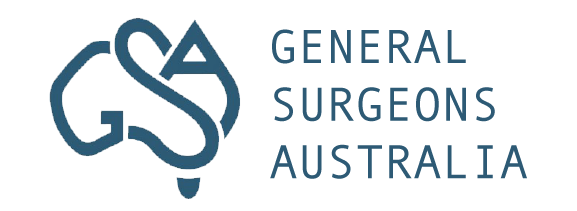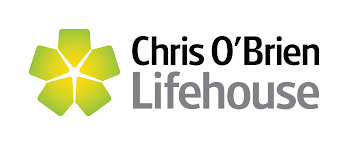Non-Lactational Mastitis
What is Non-Lactational Mastitis?
Non-lactational mastitis is an inflammation of the breast tissue that occurs independently of breastfeeding or lactation. Unlike lactational mastitis, which typically affects women who are breastfeeding due to milk stasis or infection, non-lactational mastitis can occur in a wider demographic, including women who are not breastfeeding, postmenopausal women, and even men in rare cases.
How Does Non-Lactational Mastitis Impact Your Anatomy and Health?
Non-lactational mastitis primarily impacts the breast tissue, causing symptoms such as pain, redness, swelling, and sometimes an observable mass or lump. The affected area may also feel warm to the touch and could be accompanied by fever or malaise, indicating a systemic response to infection.
Risk Factors for Non-Lactational Mastitis
The risk factors for non-lactational mastitis vary based on the underlying cause, but certain groups are more susceptible:
- Women with nipple piercings: Piercings can introduce bacteria into the breast tissue, leading to infections.
- Smokers: Smoking is associated with an increased risk of periductal mastitis.
- Women with a history of breast surgeries or trauma: Surgical procedures or injuries to the breast can predispose individuals to inflammation and infection.
- Postmenopausal women: Changes in breast tissue during menopause can lead to duct ectasia and subsequent inflammation.
- People with weakened immune systems: This includes individuals with diabetes, those on immunosuppressive therapies, and those with other conditions that weaken the immune system, making them more vulnerable to infections.
Causes of Non-Lactational Mastitis
Non-lactational mastitis can be caused by various factors that lead to inflammation of the breast tissue. Here are some common causes:
- Bacterial Infections: The most common cause involves bacteria such as Staphylococcus aureus or Streptococcus. Bacteria can enter through small cracks in the skin or around the nipple, especially in cases of nipple piercings or dermatitis.
- Duct Ectasia occurs when the milk ducts under the nipple become blocked and inflamed. It is commonly seen in postmenopausal women and may lead to a secondary infection and inflammation.
- Subareolar Abscess: This is a collection of pus that forms under the areola, often associated with duct ectasia or a blocked gland.
- Smoking: Smokers are at a higher risk due to the potential development of periductal mastitis, where inflammation occurs around the milk ducts, often related to the chemical effects of smoking.
- Chronic Health Conditions: Conditions that weaken the immune system, such as diabetes or HIV, can make an individual more susceptible to infections that may lead to mastitis.
- Trauma or Surgery: Any physical trauma or surgical procedures on the breast can lead to inflammation and infection if the breast tissue is damaged.
- Foreign Objects include breast implants or foreign bodies that irritate the breast tissue or introduce bacteria.
Symptoms of Non-Lactational Mastitis
- Pain and Tenderness: One of the most common symptoms, often localised to one breast area.
- Redness and Swelling: The affected breast area may appear red and feel swollen.
- Warmth: The inflamed area might feel unusually warm to the touch.
- Lump or Thickening: Some individuals might notice a lump or thickened area within the breast.
- Nipple Discharge: There may be unusual discharge from the nipple, which could be clear, yellow, green, or bloody.
- Fever and Malaise: Systemic symptoms such as a fever or feeling unwell can sometimes accompany mastitis.
- Abscess Formation: In more severe cases, an abscess may form, a collection of pus that causes significant pain and swelling.
Types of Non-Lactational Mastitis
Non-lactational mastitis can be categorised into several types based on the underlying cause or the nature of the inflammation:
- Periductal Mastitis: Often associated with smokers, this type involves inflammation around the milk ducts. It is particularly common in younger women and can be linked to smoking, which affects the blood supply to the breast tissue.
- Duct Ectasia: This type occurs mainly in postmenopausal women and involves the thickening and clogging of the milk ducts beneath the nipple, which can sometimes lead to inflammation and infection.
- Subareolar Abscess: This involves the formation of an abscess just beneath the areola, often secondary to duct ectasia or other infections. It's more common in younger and middle-aged women.
- Idiopathic Granulomatous Mastitis (IGM): Characterised by the formation of granulomas (small areas of inflammation) within the breast tissue, this rare form of mastitis is poorly understood and can mimic breast cancer clinically and radiologically.
- Infectious Mastitis: Caused by bacterial infections that do not relate to breastfeeding. These infections can occur due to skin injuries, surgical procedures, or as a complication of medical conditions like diabetes.
Diagnosis of Non-Lactational Mastitis
- Clinical Examination: A doctor will thoroughly examine the breasts to assess any signs of inflammation, lumps, or discharge.
- Medical History: It is crucial to understand the patient's medical history, including any previous breast conditions, surgeries, smoking habits, or other relevant health issues.
- Imaging Tests:
- Mammography: Often used in older women to look for underlying abnormalities within the breast tissue.
- Ultrasound: This is particularly useful for examining specific areas of concern in the breast, such as a lump or area of thickening, and for guiding procedures like biopsies or abscess drainage.
- Biopsy: In cases where there is an unclear diagnosis or a suspicion of malignancy, a biopsy may be performed to obtain a tissue sample for pathological examination.
- Microbiological Tests: If an infection is suspected, cultures from nipple discharge or fluid aspirated from an abscess may be tested to identify the specific bacteria involved, which can guide antibiotic treatment.
Treatment of Non-Lactational Mastitis
- Antibiotics: If a bacterial infection is identified, antibiotics are prescribed to eliminate the infection. The choice of antibiotic may depend on the results of culture tests.
- Incision and Drainage: In cases of an abscess, surgical drainage may be necessary to remove the pus and alleviate symptoms.
- Pain Management: Non-steroidal anti-inflammatory drugs (NSAIDs) can reduce pain and inflammation.
- Corticosteroids: For inflammatory conditions like idiopathic granulomatous mastitis, corticosteroids may be prescribed to reduce inflammation.
- Surgery: Surgical removal of the affected ducts or tissue may be considered in recurrent or severe cases, especially those involving duct ectasia or persistent abscesses.
- Lifestyle Changes: For smokers, quitting smoking is crucial as it can significantly impact the recurrence and severity of periductal mastitis.
What if Non-Lactational Mastitis is Untreated?
Leaving non-lactational mastitis untreated can lead to several complications:
- Abscess Formation
- Chronic Pain
- Scarring and Fibrosis
- Recurrent Infections
- Impact on Overall Health
Prompt diagnosis and appropriate treatment of non-lactational mastitis are essential to prevent these complications and ensure effective management of the condition. If you experience symptoms of mastitis, consulting a doctor is crucial for appropriate intervention.









